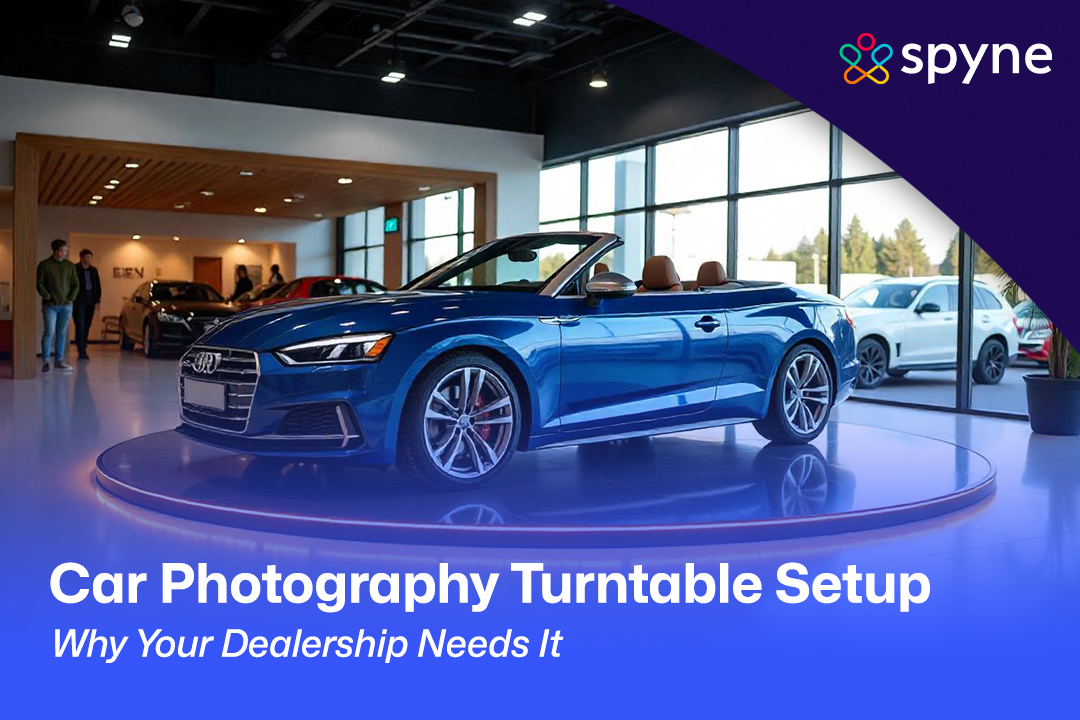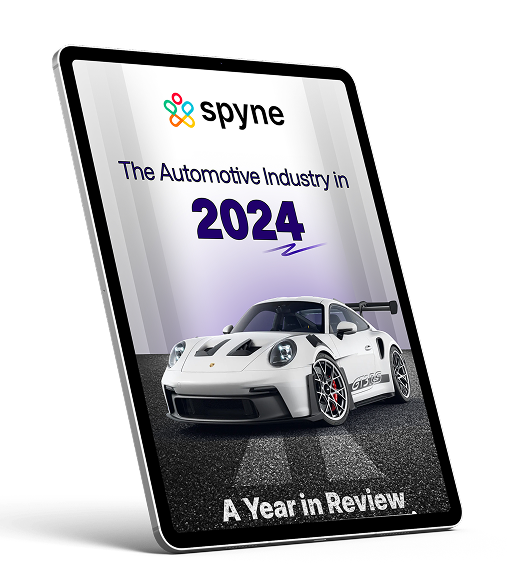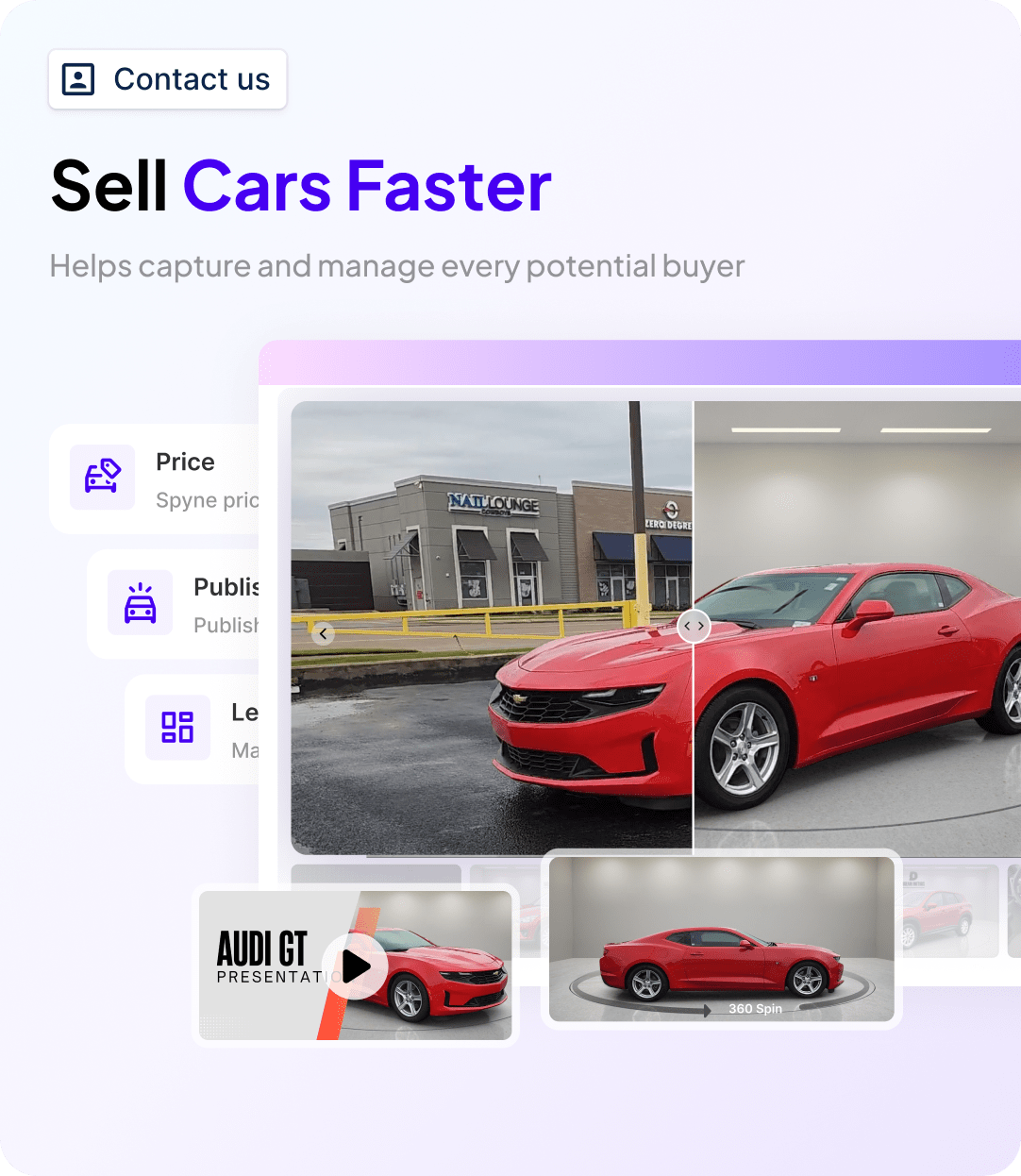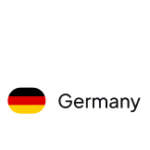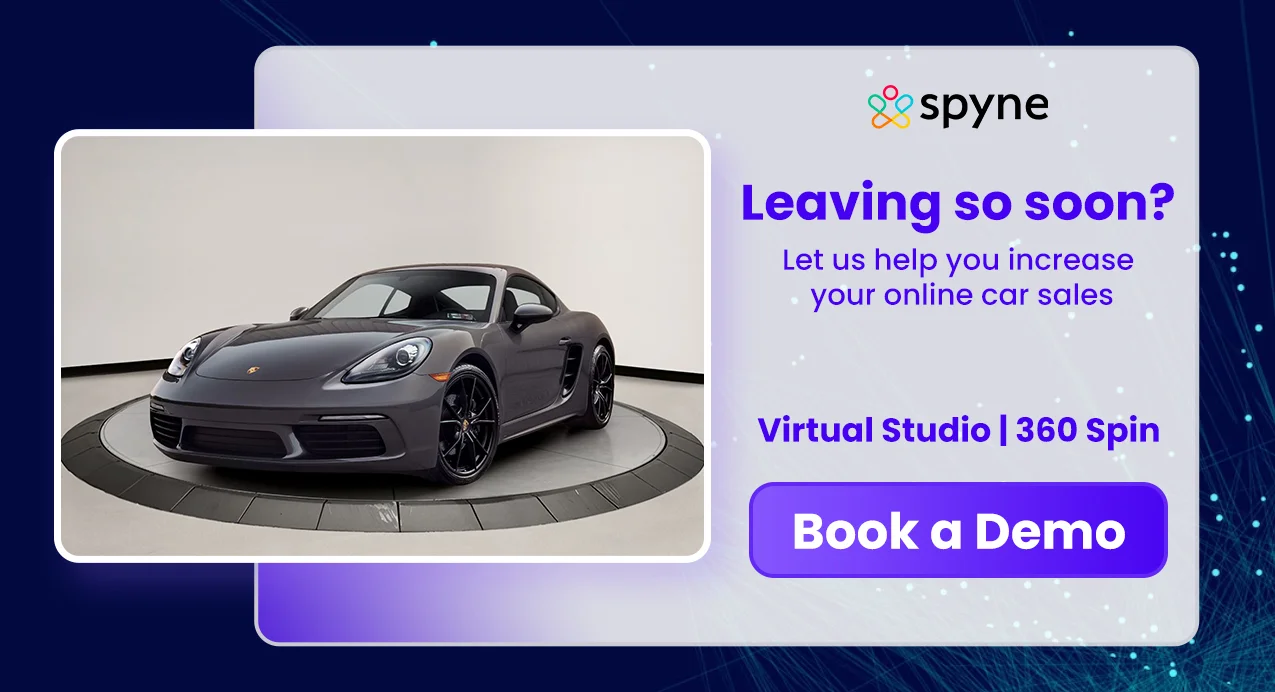In automotive sales, looks really do matter, especially online. Before anyone walks into a showroom, they’ve likely already scrolled through dozens of listings. That’s why a solid car photography turntable setup is a must. By using vehicle turntables, dealerships and photographers can shoot stunning 360-degree photos and videos that show off every detail of a car.
If you are designing your own vehicle turntable plans or thinking about setting up a full vehicle photography studio, having the right tools makes a huge difference. Sure, vehicle turntable cost can vary depending on how advanced you want to go, but even basic setups can take your visuals from average to impressive. So, if you’re ready to create a standout vehicle photography turntable setup, this blog has you covered.
Turntable For 360-Degree Car Photography
A Car Photography Turntable Setup is the heart of creating a smooth, professional-looking 360 car spin that grabs attention. In the age of online shopping, where people judge vehicles through a screen, this setup gives potential buyers a walk-around experience without leaving their home. Unlike traditional car photography, which captures a few fixed angles, a car photography turntable setup lets you photograph or film every curve, corner, and surface with perfect consistency.
So how does it work? Simple. Vehicle turntables rotate the car smoothly while your cameras stay in place, snapping shots or recording from every angle. It’s great for car merchandising, as it presents vehicles in a way that feels interactive and immersive. A high-quality car photography turntable setup helps dealerships create stunning visuals that leave a lasting impression.
What’s especially useful is how much time and effort it saves. Instead of moving the car (or your camera) after every shot, the car photography turntable setup handles all the rotation. This ensures uniform angles, better lighting control, and a consistent professional finish. In a busy car photography studio, this makes production smoother and faster, especially when you’re handling large inventory.

Professional Photo Studio Applications for Turntables
In a modern vehicle photography studio, a car photography turntable setup is key to producing high-quality visuals quickly and consistently.
Vehicle turntables are widely used by dealerships, resellers, and photographers to create clean, 360-degree views. With automated controls, a car photography turntable setup ensures perfect alignment, lighting, and angles, no matter who’s behind the camera. This is crucial for car merchandising, especially in studios shooting 50+ cars a day.
High-end studios also use car photography turntable setups for campaigns, pairing them with premium lighting and backdrops to highlight every detail. If you’re building your own setup, start with solid vehicle turntable plans. Depending on your needs, vehicle turntable cost can vary but smart investment pays off fast. A strong vehicle photography turntable setup will boost efficiency, quality, and output, making it a must-have for any serious vehicle photography studio.
360 Car Turntables for In-House Product Photography
For businesses looking to bring car photography in-house, a car photography turntable setup offers a cost-effective and efficient solution. In-house vehicle photography studios equipped with vehicle turntables allow dealerships to control the entire photography process, from capture to post-processing, without relying on external agencies. This not only reduces costs but also speeds up the time-to-market for vehicle listings.
A car 360 spin created with a turntable is particularly effective for online platforms, where interactive visuals can significantly boost engagement. Studies show that listings with 360-degree imagery generate higher conversion rates than those with static photos, as buyers feel more confident when they can explore a vehicle from every angle. A car photography turntable setup enables dealerships to produce these spins quickly and consistently, even with minimal staff training.
In-house setups also offer flexibility. Dealerships can customize their car photography turntable setup to fit their specific needs. With the right vehicle turntable plans, businesses can design a studio that maximizes space and efficiency, ensuring a seamless workflow from vehicle intake to online publication.
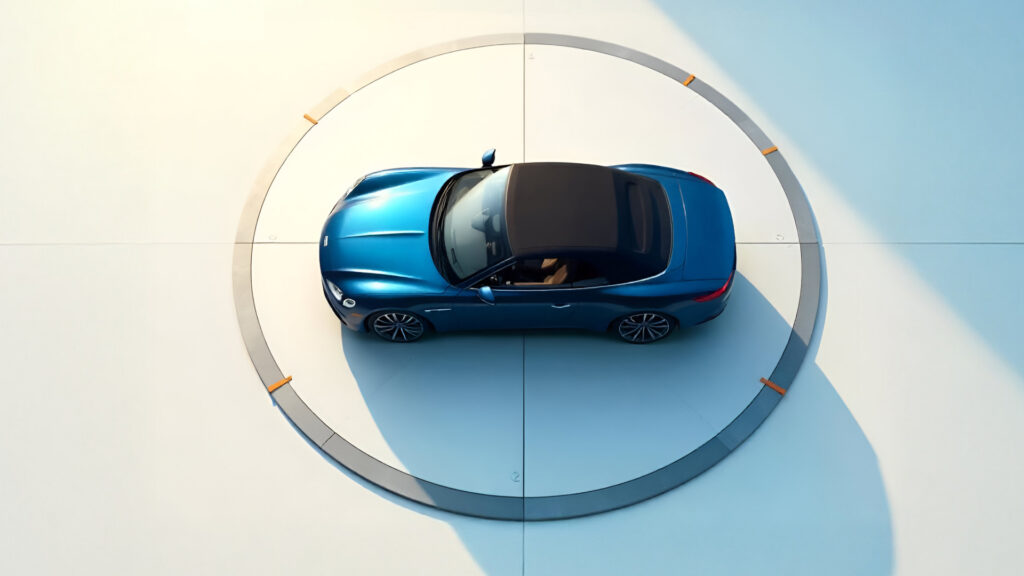
Garage Turntables and Parking Systems vs Studio Turntables
Garage turntables are built for convenience. They help in tight parking spaces by rotating the car so you don’t need to reverse or make tricky turns. They’re strong, simple, and easy to use but they’re not made for detailed visuals. Most lack features like programmable stops, camera triggers, or lighting sync which are key elements in a vehicle photography studio.
In contrast, studio turntables are made for precision. Designed specifically for a car photography turntable setup, they support camera automation, accurate rotation control, and integration with editing tools. They live in a controlled vehicle photography studio where lighting, backgrounds, and timing all matter.
If your goal is top-tier car photography, vehicle inspection, or car damage assessment, a studio system is a must. A garage model might work for simple displays, but it won’t cut it for high-quality content or fast workflows.
How Does a Turntable for Car Photography Operate?
A car photography turntable embodies a mechanized platform, engineered to revolve a vehicle with fluidity and exactitude. The apparatus comprises several fundamental elements:
The Platform: This revolving deck, commonly fabricated from steel or fiberglass, is built to withstand hefty loads, sometimes up to 10,000 pounds in rugged variants. Its surface is crafted to be impeccably level and silky-smooth, nullifying any tremors that could compromise image clarity.
The Motor: A potent motor energizes the platform’s rotation, linked via chains, belts, or spokes. This motor guarantees an unwavering velocity of rotation, pivotal for capturing images with uniformity.
The Control Unit: Operators manipulate the turntable using a wireless or touchscreen interface, empowering them to initiate, halt, or modulate the rotation pace. In sophisticated configurations, programmable functions enable automated shooting sequences.
The Base and Track: Stability is anchored by the base, while a steel track ensures seamless, whisper-quiet rotation. Some turntables nestle flush within the floor for unobtrusive access, whereas others rest atop elevated platforms with gentle ramps.
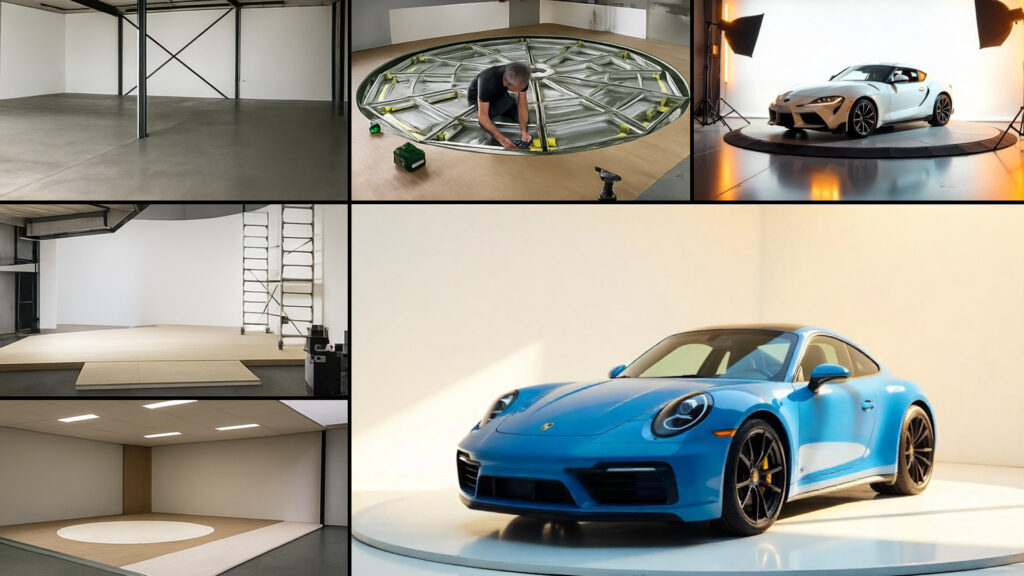
The Workflow in a Typical Setup
Initially, the vehicle is carefully driven onto the turntable. The operator selects a predetermined photographic regimen via the control console, dictating parameters such as the total number of shots, often 36 to encompass a full 360-degree panorama and the angular intervals between captures.
As the platform pirouettes, stationary cameras, frequently tethered to software, snap images at precise positions. For example, the turntable might pause every 10 degrees to capture a frame, ensuring a comprehensive and fluid rotational sequence.
Advanced installations weave in lighting and post-processing automation, creating everything from image acquisition to background extraction and instant online deployment.
Technology & Software Comparison
Not every car photography turntable setup offers the same tech. Your choice affects output quality, ease of use, and how fast you can work. Here’s a quick breakdown:
Basic Turntables
Brands like Spin-It offer manual/semi-auto setups with limited software. On the upside, the cost is much lower, starting around $16,000, making them a solid option for small studios or low-volume dealers.
Automated Turntables
PhotoRobot, EZ360, and others offer smart systems with camera sync, lighting control, and post-processing automation. They’re designed for speed and consistency, but that convenience comes at a premium, with costs reaching $55,000 or more.
Software Integration
Tools like Spyne offer tools like 360 spin which makes life easier, handling 360 vehicle inventory, uploads, and even editing car photos.
When making vehicle turntable plans, match your system to your scale. Smaller studios may stick to basics to control vehicle turntable cost, while bigger ones benefit from automation to shoot faster and better.
Car Turntable Installation & Setup
Setting up a car photography turntable demands planning to guarantee peak functionality. Here’s a detailed walkthrough for crafting a vehicle photography studio centered around a turntable:
Space Evaluation
Pick a site spacious enough to house the turntable and accompanying gear. For a 4.5-meter (roughly 15 feet) turntable, allow a minimum of 6 meters (20 feet) width to comfortably fit larger vehicles. Keep in mind the proximity to cleaning or reconditioning zones to streamline your workflow.
Choosing the Right Turntable
Select a turntable tailored to your requirements. A standard 4.5-meter model suits most passenger vehicles, while a 5.5-meter (18 feet) turntable better accommodates bulkier rides like vans or SUVs. Pricing varies significantly, with basic models starting around $16,000 and fully automated, feature-rich systems climbing up to $55,000.
Installation Options
Decide between embedding the turntable flush into the floor or mounting it above ground. In-ground setups demand structural modifications, making them ideal for new builds or major renovations. Conversely, above-ground platforms use ramps for vehicle access, simplifying installation.
Lighting and Backgrounds
Outfit your studio with soft, diffused lighting and seamless backdrops to banish harsh shadows and reflections. LED panels and softboxes work wonders to accentuate every vehicle detail.
Software Configuration
Install and fine-tune the turntable’s control software, ensuring it harmonizes with your camera systems and inventory management platforms. Run trial shoots to calibrate rotation speeds and camera triggers for flawless image capture.
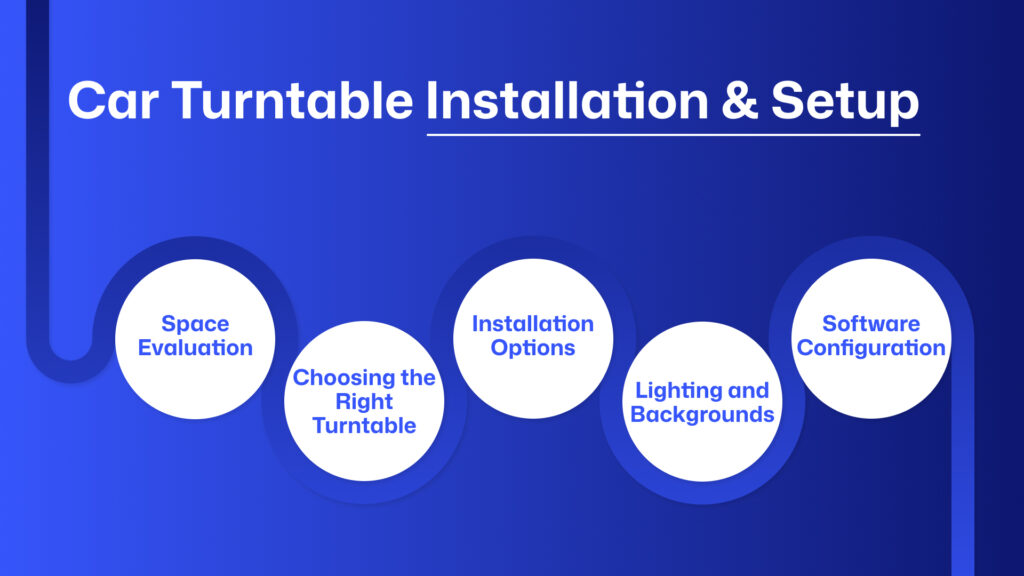
Seamless Integration with Existing Tech
The power of a car photography turntable multiplies when fused with your current technology, forging a smooth pipeline from image capture to publication.
Camera Sync: Leading brands like PhotoRobot and EZ360 enable tethering to high-resolution cameras such as the Canon 5D Mark IV, allowing automatic shooting at exact rotational increments.
Lighting Automation: Cutting-edge setups link turntable rotation with adaptive lighting, maintaining consistent illumination throughout the 360-degree spin.
Inventory Management: Spyne software even auto-generates 360-degree spins and branded videos, cutting down on tedious manual tasks.
Post-Production Efficiency: AI-powered tools like Spyne’s car 360 spin streamline post-processing by automatically removing backgrounds, cropping, and enhancing images, delivering web-ready photos within seconds. This drastically cuts down on editing time and costs.
Conclusion
A car photography turntable setup is an amazing asset for dealerships, photographers, and auto aficionados alike. By enabling stunning 360-degree captures, turntables accelerate workflows, trim expenses, and elevate digital showrooms. Whether constructing a new studio or upgrading an older one, careful consideration of space, workflow, and budget ensures the ideal solution tailored to your business.
From professional studios to internal dealership setups, the right car photography turntable transforms ordinary listings into dynamic, interactive showcases that captivate buyers and build credibility.


